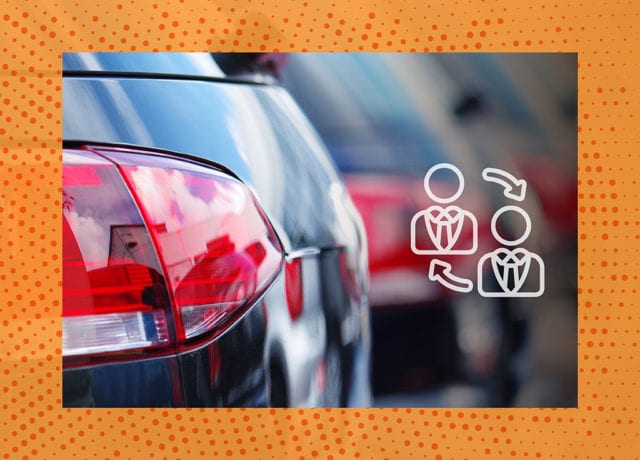Companies have pledged to reduce their carbon emissions—and a big part of that is by transforming their automotive fleets.
Many have committed to purchasing thousands of new eco-friendly cars over the upcoming years, but fleet sales haven’t picked up steam yet. And advertising spend hasn’t either.
We encourage you to subscribe to our blog for the latest data surrounding the advertising industry. We will provide daily updates as COVID-19 continues to make its mark on the US economy.

Which companies are the latest to make the electric shift?
Last week, Amazon’s first Rivian electric vans began delivering packages to customers. The company began testing Rivian’s all-electric vans in Los Angeles a few months ago as part of its pledge to achieve net-zero emissions by 2040.
The first Rivian vans were deployed in the Denver area, but are planned to expand to 16 U.S. locations close to distribution centers. The vans have a 150-mile range.
“From what we’ve seen, this is one of the fastest modern commercial electrification programs, and we’re incredibly proud of that,” Ross Rachey, director of Amazon’s Global Fleet and Products, said in a statement. Amazon uses other electric vehicles, and has already delivered 20 million packages via greener transportation.
Other local businesses in Denver are also committed to travelling emission-free on deliveries and sales calls. Denver Beer Co. bought Nissan Leaf EVs for their sales team members.
“The Denver Beer Co Nissan Leaf EVs are one more step that we are taking to reduce our carbon footprint and environmental impact,” shared Denver Beer Co co-founder Patrick Crawford. “Every small step counts and we are looking for every possible opportunity to operate our brewery in the most sustainable way possible.”
JCB, one of the top manufacturers of construction equipment, is another early adopter of EVs. It recently added 40 new EVs to its fleet. “JCB is making great strides in developing low emissions technology to power its range of construction equipment and we are delighted to complement this strategy with the introduction of self-charging hybrid cars into our fleet,” said JCB chief operating officer Mark Turner.
Overall U.S. Q1 fleet sales are down YoY, but as businesses aim to reduce their environmental footprints and the economy rebounds, automakers will likely see increased demand. But will suppliers be able to keep up?
MediaRadar Insights
Even though the economy is coming back to life in many ways, the auto industry is struggling with the shortage of semiconductors. The Association of Fleet Professionals has warned that if the disruption isn’t resolved, fleet decision makers will need to give more lead time for purchases.
This may be one factor contributing to lower fleet ad spend. In B2B fleet sales, spend in April 2021 was down 19% to $428kmm compared to $530k in April of 2020.
Some vehicles—including vehicles from Ford, Jaguar Land Rover, Stellantis and Volkswagen— are already in reduced supply and are difficult to get a hold of. It’s not the most urgent matter to advertise a product that has a waiting list of a year or more.
Another interesting trend coming out from the pandemic is that print no longer takes the majority share of ad spend in this category. In April 2021, print accounted for 49% of fleet automotive ad spend in the B2B industry. In 2019, print held 77% of ad spend in the same space.
The B2B fleet automotive industry didn’t experience the biggest hit in ad spending until late summer and early Fall. While we didn’t expect the number to still be down 19% in April, we expect to see growth in the upcoming summer months as companies look to modernize their fleets.
For more updates like this, stay tuned. Subscribe to our blog for more updates on coronavirus and its mark on the economy.



